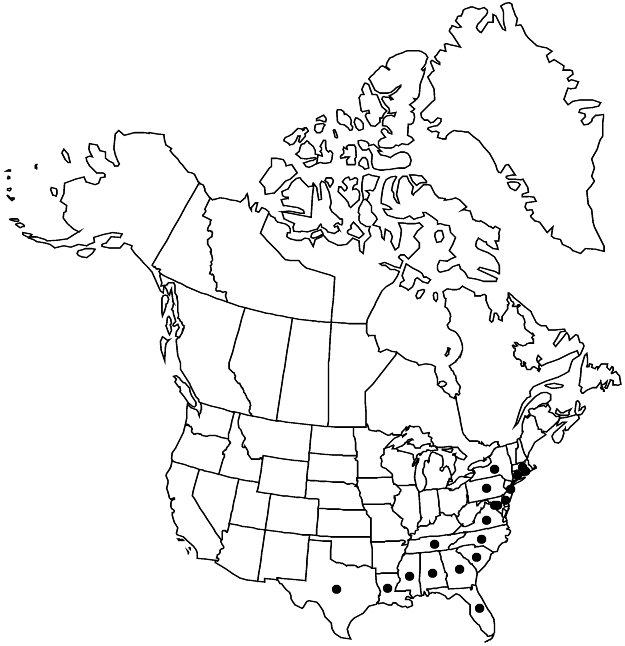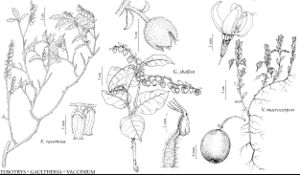Eubotrys racemosa
Trans. Amer. Philos. Soc., n. s. 8: 269. 1842,.
Stems erect, (0.3–)1–4 m, branches spreading. Leaves: petiole 1–3 mm; blade 3–8 cm, surfaces pilose on major veins abaxially. Inflorescences (deciduous around anthesis), erect or ascending, secund, straight, 3–5 cm; bracts ± deciduous, lanceolate, 4–5 mm. Flowers: calyx campanulate, sepals lanceolate, 2–3 mm, apex acute; corolla white, 7–9 mm, lobes recurved, glabrous; stamens 2–4 mm; anthers 4-awned, ca. 1.5 mm, thecae divergent distally; ovary glabrous. Capsules 2–3 mm wide. Seeds not winged, wedge- to crescent-shaped, not flat, 1–1.2 mm. 2n = 22.
Phenology: Flowering late spring–summer.
Habitat: Swamps, pond shores, streamheads and their ecotones, blackwater shores and banks, cypress depressions, wet pine flatwoods, wet, sandy, acidic woods
Elevation: 0-400 m
Distribution

Ala., Conn., Del., D.C., Fla., Ga., La., Md., Mass., Miss., N.J., N.Y., N.C., Pa., R.I., S.C., Tenn., Tex., Va.
Discussion
Eubotrys racemosa occurs primarily on the coastal plain; there are scattered records inland from the Hudson Highlands of New York, and from northern Alabama and central and eastern Tennessee.
Selected References
None.
